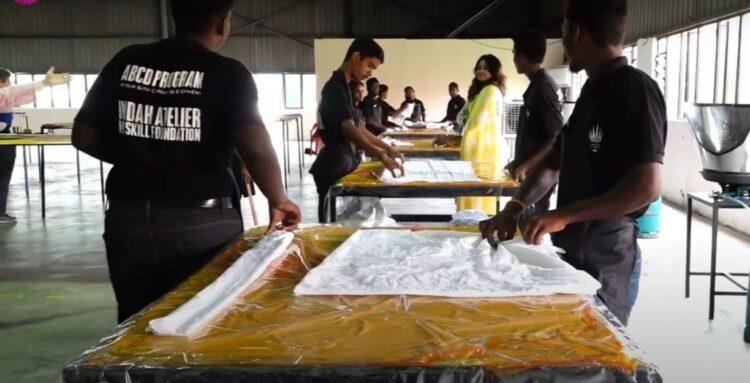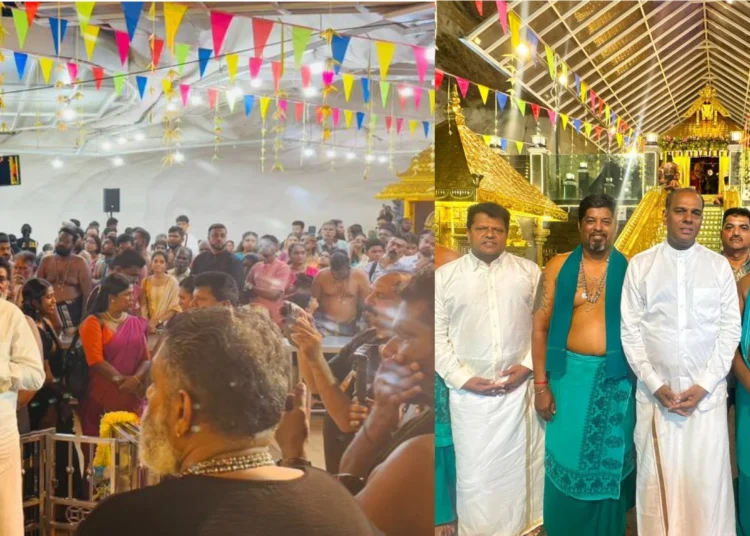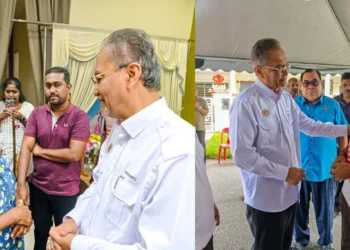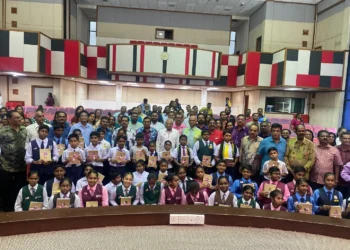Batik holds profound cultural significance among Malay people in Malaysia. It’s not just a form of artistic expression but also a symbol of their heritage and identity. Malays have been using batik for generations, and it plays a vital role in traditional clothing, ceremonies, and celebrations, connecting them to their roots.
Yet, batik transcends ethnic boundaries and is embraced by various communities here. Despite Malays, Chinese, Indians, and indigenous groups all appreciate and incorporate batik into their attire and customs. Usually government servants will practice wearing Batik clothes on every Thursdays. We also use Batik clothes for official events.
In this case, our Indian students got an opportunity to delve into the Batik industry. Batik has found its place in various aspects of Malaysian life, and there is now a strong desire to share this cherished art form with the wider world. The aim is for Batik to be recognized and embraced on a global scale, as it is an integral part of the nation’s heritage.
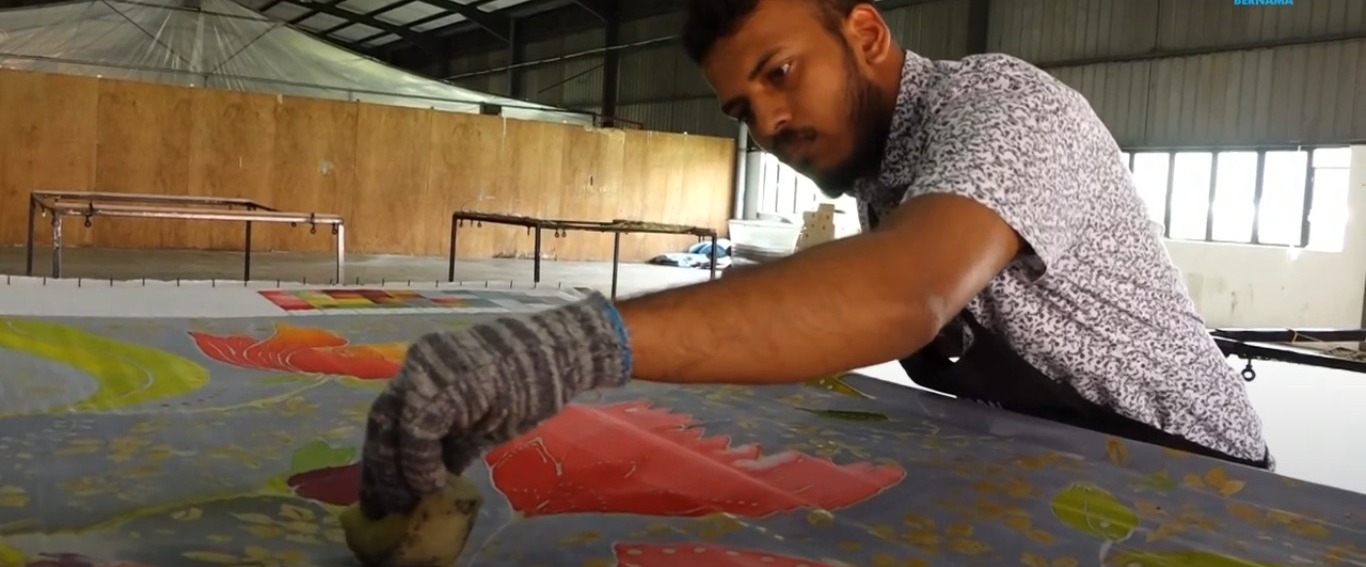
The belief is that Batik should not be limited to any specific ethnicity, and there is encouragement for people of all races to engage with and learn the intricate process of creating Batik. To foster this inclusivity, an initiative has been introduced to teach the art of Batik-making to Indian students, further extending the reach of this exquisite craft beyond Malaysia’s borders. This initiative aims to promote cross-cultural appreciation and preserve the legacy of Batik for generations to come.
“My Skill” foundation located at Kalumpang in Hulu Selangor, Selangor has collaborated with “Indah Atelier”, a Batik manufacturing company for this initiative. Students who did not complete their studies in school, are learning other beneficial skills in this foundation. 13 students from them, are learning how to make Batik clothing as well.

In this class, they learn how to melt and shape a candle known as “mencanting” in Malay and create patterns from it which is known as “blok” in Malay, select colors, organize shapes accordingly. Additionally, Muhammad Salehuddin Amdan Shah Muhammad Maslan, one of the trainer there stated that they are teaching the kids on how to transform what one feels in their mind into a painting. Drawing art is the basic foundation for Batik production.
They will have to discover which students has good drawing talent in them naturally. Then they will choose those students and train them on how to draw Batik patterns. Even though it was a short term workshop, the trainers were stunned looking at the student’s interest in learning, support and cooperation throughout the learning sessions. This was also a new experience for the students.
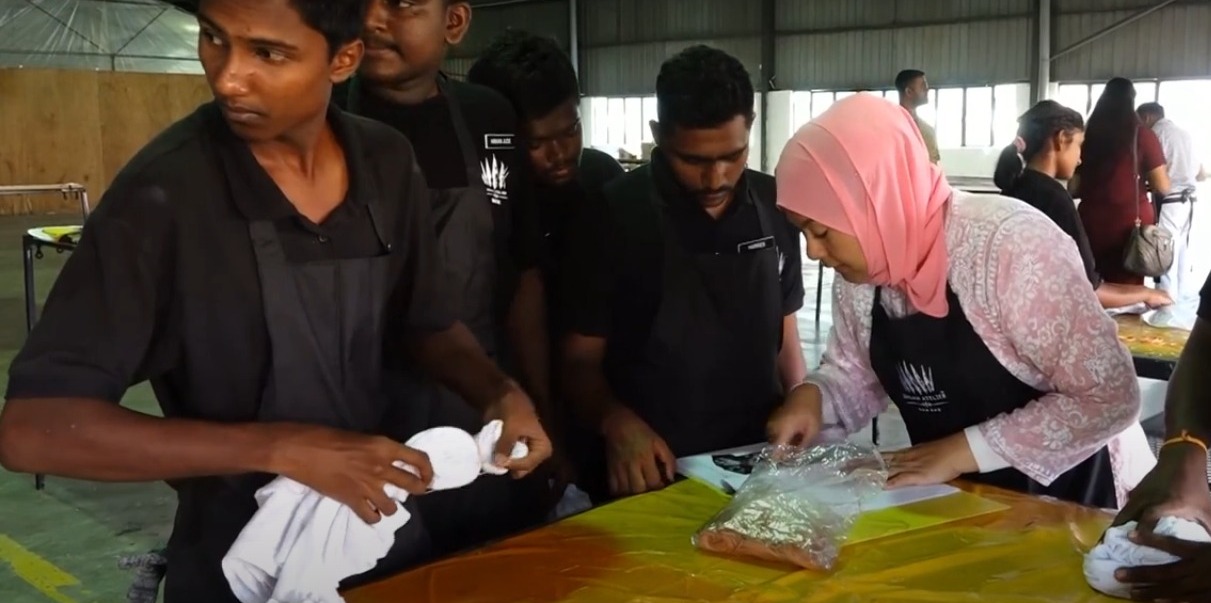
We experienced something entirely new when we learned the art of Batik. Our desire to explore this craft stemmed from our deep love for the arts. This newfound knowledge has further fueled our enthusiasm to delve into the intricacies of this art form, said Sanjay Rao Ramesh, Shuba Swedlena Nahandh Kaur and Sri Harish Gobinath.
They designed a “Tie-Dye” type t-shirt based on the their knowledge from the workshop. They have been taught on the strategies to sell the products which are designed by themselves among the circle in the foundation itself. This workshop took place for six days and every students will be receiving a certificate of participation for attending this programme. The best students will be chosen from this and will be taught further on Batik marketing skills.
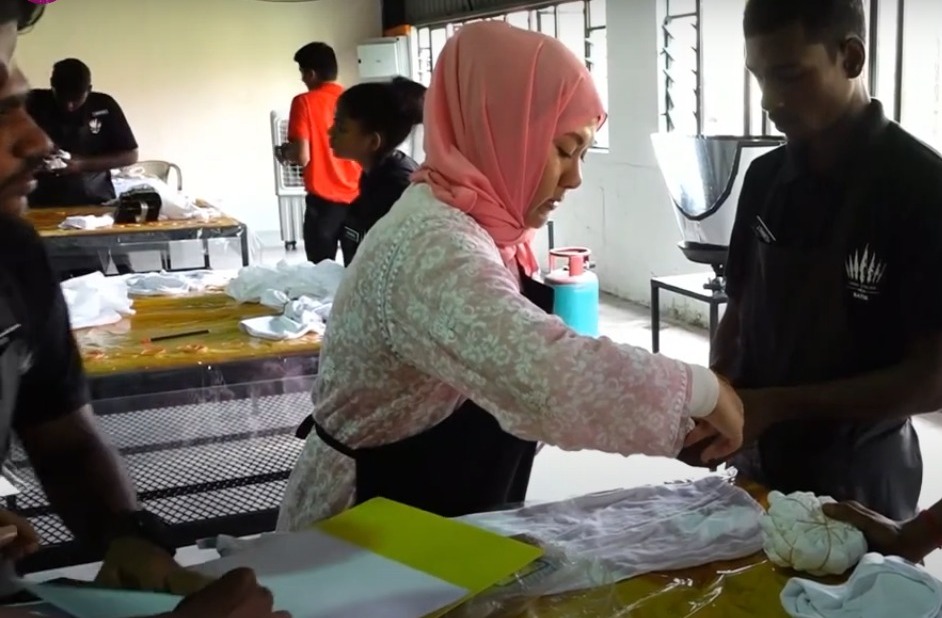
This is a wonderful opportunity for Indian students to learn a new art. It will also strengthen the bonding and understanding among Malaysians who are from different cultural background.
Source: Bernama
Follow us on Instagram, Facebook or Telegram for more updates and breaking news.


